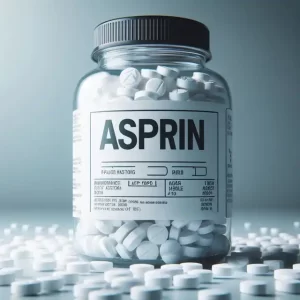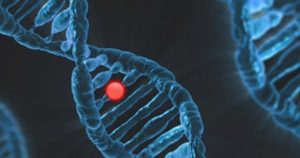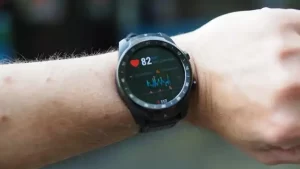How to treat T-cell malignancies by CAR-T therapy?
- Aspirin: Study Finds Greater Benefits for These Colorectal Cancer Patients
- Cancer Can Occur Without Genetic Mutations?
- Statins Lower Blood Lipids: How Long is a Course?
- Warning: Smartwatch Blood Sugar Measurement Deemed Dangerous
- Mifepristone: A Safe and Effective Abortion Option Amidst Controversy
- Asbestos Detected in Buildings Damaged in Ukraine: Analyzed by Japanese Company
How to treat T-cell malignancies by CAR-T therapy?
- Red Yeast Rice Scare Grips Japan: Over 114 Hospitalized and 5 Deaths
- Long COVID Brain Fog: Blood-Brain Barrier Damage and Persistent Inflammation
- FDA has mandated a top-level black box warning for all marketed CAR-T therapies
- Can people with high blood pressure eat peanuts?
- What is the difference between dopamine and dobutamine?
- How long can the patient live after heart stent surgery?
How to treat T-cell malignancies by CAR-T therapy?
Chimeric antigen receptor T-cell (CAR-T) therapy has been widely used in the treatment of various types of relapsed/refractory (R/R) B-cell malignancies. At present, the U.S. Food and Drug Administration (FDA) has approved five CAR-T therapies.
Tisagenelecluel, Axicabatagene ciloleucel and Liscabatagene Maraluel are three CAR-T products for the treatment of R/R diffuse large B-cell lymphoma ( DLBCL ), brexucabtagene autoleucel is used for the treatment of mantle cell lymphoma ( MCL ), and Idecabatagene Vicluel is targeted BCMA’s latest CAR-T product, which has been approved by the FDA for the treatment of certain multiple myeloma ( MM ).
However, despite all these clinical successes, CAR-T therapy still has limited responses in certain types of hematological malignancies and solid tumors, and T-cell malignancies are one area where CAR-T therapy has not yielded good results.
T-cell tumors include T-cell acute lymphoblastic leukemia ( T-ALL ), T-cell large granular lymphocytic leukemia ( LGL ), adult T-cell leukemia/lymphoma ( ATL or ATLL ), T-cell prolymphocytic leukemia ( T-PLL ) ) and peripheral T-cell lymphomas ( PTCLs ).
Compared with B-cell malignancies, only limited clinical responses can be achieved with first-line cancer therapy modalities, including chemotherapy , in patients with T-cell malignancies , resulting in a poor prognosis for such patients.
Considering the clinical success of CAR-T therapy in B-cell malignancies, it is expected that CAR-T therapy will also improve clinical outcomes in patients with T-cell malignancies. However, CAR-T therapy of T-cell tumors is still quite challenging.
The first challenge is the lack of T-cell tumor-specific CAR-T target antigens, followed by cannibalism, T-cell aplasia, and product contamination of malignant T-cells during autologous CAR-T production. Important challenges, which require further in-depth research.
Target antigens, cannibalism and solutions
CD3
CD3 is a Pan-T surface antigen that forms a complex with TCR, recognizes the target antigen and leads to T cell activation.
The presence of CD3 on all mature T cells makes this antigen a favorable target for immunotherapy of T-cell malignancies.
However, the use of CD3 as a CAR-T therapeutic target for T-cell malignancies may lead to adverse effects due to cannibalism.

Therefore, attempts to generate anti-cannibalistic CAR-T cells or to use other types of effector cells, such as NK cells, may eliminate the above problems to some extent.
Genome editing methods can provide multiple pathways to destroy cannibalism-causing antigens, and this engineered CAR-T cells have specific and significant tumoricidal activity against primary T cells and childhood T-ALL samples.
In addition, other researchers have designed third-generation CD3-targeting CARs and expressed them in the NK cell line NK-92.
Compared with T cells, NK cells lack CD3 expression and have a shorter life cycle, and these CAR-NKs showed antitumor activity against CD3-expressing PTCL samples and various T-cell leukemia cell lines.
CD5
CD5 is a transmembrane glycoprotein that plays a role in the survival of human lymphocytes and is a cellular component that negatively regulates TCR signaling.
Normal expression of CD5 was observed only in thymocytes, peripheral T lymphocytes, and a subset of B lymphocytes called B-1a cells.
Aberrant expression of CD5 has been detected in several T-cell malignancies including T-ALL and PTCL.
In 2015, Mamonkin et al. designed CD5-redirected CAR-T and reported that these cells underwent partial and transient cannibalism with specific antitumor activity.
We also expressed third-generation CARs in the NK-92 cell line and demonstrated that, in addition to stable expansion in vitro, these CAR-NKs mediated specificity for human T-ALL, PTCL, and primary CD5+ cells and significant tumoricidal activity.
In addition, tumoricidal activity can be significantly enhanced using the co-stimulatory domains of 4-1BB or 2B4.
CD7
CD7 is a transmembrane glycoprotein from the Ig superfamily, normally expressed on NK cells and T lymphocytes. Studies have shown that a high proportion of T-ALL and T-cell lymphomas overexpress CD7.
However, the production of CAR-T targeting CD7 has been problematic because T cells themselves express CD7, which can lead to cannibalism and the expansion of destructive CAR-T products.
In 2017, Gomes Silva and colleagues used CRISPR-Cas9 to disrupt CD7 expression in T cells, which were then converted into CAR-Ts, an approach that not only did not have any negative impact on the tumoricidal function of these CAR-Ts, but also improved their amplification efficiency.
These CAR-Ts have unique antitumor activity against various CD7-expressing cell lines and T-ALL.
In the first-in-human clinical trial of CD7-targeted CAR-T ( NCT04004637 ), the researchers used CD7-specific nanobodies as the targeting domain of CAR-T, in addition, they used smart technology by retaining the antigen in the endoplasmic reticulum and and/or in the Golgi apparatus to prevent CD7 surface expression and subsequent cannibalism.
Results showed that these CAR Ts demonstrated robust expansion and acceptable persistence in 2 patients ( 66% ) who reported minimal residual disease ( MRD )-negative disease in less than one month. CR, abnormal T cells are undetectable.
However, variable levels of cytokine release syndrome ( CRS ) as well as elevated levels of IL-6 were observed in all patients .
Other clinical trials ( NCT04033302 and NCT03690011 ) are also testing the applicability and efficacy of CD7-targeted CAR-T in various types of T-cell malignancies.
CD1a
CD1a is a cell surface antigen present on cortical T-ALL cells, and specific expression of this antigen is also observed in developing cortical thymocytes.
T cells and CD34+ progenitor hematopoietic cells did not show CD1a expression.
This property of CD1a makes it a suitable target antigen whose targeting minimizes the potential for on-target non-tumor toxicity.
A team of researchers explored CD1a-targeting CAR-Ts, which showed that, in addition to being cannibalistic resistance, these CAR-Ts were effective against CD1a-expressing T-ALL cell lines and primary cells from cortical T-ALL samples.
Has strong tumor-killing ability. Furthermore, in vivo evaluations in PDX preclinical models demonstrated that these effector cells exhibited persistent and considerable antitumor activity following administration.
CD4
There have been several studies of CD4-targeted CAR-T. In 2016, Pinz et al. investigated third-generation CD8+CD4-targeted CAR-T and reported that these cells showed unique antitumor activity against CD4-expressing cell lines and patient-derived PTCL cell samples, while retaining their memory stem cells. similar phenotype.
Furthermore, in 2017, Pinz et al. generated third-generation CD4-targeted CAR-NK cells using the NK-92 cell line.
In an in vivo xenograft model, such CD4-targeting CAR-NKs mediate potent antitumor activity against malignant cells and prolong survival.
However, some researchers have pointed out that in T-cell malignancies, CAR-mediated CD4 targeting may contribute to T-cell aplasia and subsequent HIV/AIDS-like syndromes.
In this regard, Ma et al. used alemtuzumab, a CD52 mAb , as a natural safety switch to eliminate CD4-targeted CAR-T after administration to prevent T-cell aplasia.
However, the safety and efficacy of CD4-targeted CAR-T in the treatment of T-cell malignancies have not been confirmed in clinical trials, some of which have been initiated ( NCT03829540 ).
CD30
CD30, also known as TNFRSF8, is expressed after T cells and B cells receive activating signals stimulated by target antigens.
CD30 is also expressed in various T-cell malignancies, including T-ALL and anaplastic large cell lymphoma ( ALCL ).
Currently, CD30-targeting CAR-T is being studied in various stages of clinical trials. In 2017, a Phase I dose-escalation clinical trial ( NCT01316146 ) reported that seven patients with R/R HL and two patients with ALCL received CD30-targeted second-generation CAR-T cells.
No CAR-T-related toxicity was reported in the study, and in addition, among the 7 HL patients in this study, there were 2 CRs ( one lasting more than 2.5 years and the other about 2 years ) and 3 SDs.
In addition, one of the 2 ALCL patients experienced a CR lasting 9 months. In the same year, a report from another clinical trial ( NCT02259556 ) involving 18 patients with progressive R/R HL showed that only 2 patients experienced severe toxicity and the remaining patients were well tolerated by CAR-T infusion.
In terms of efficacy, 7 patients were in partial response and 6 patients had stable disease.
CD37
CD37 is a tetrapeptide leukocyte-specific surface antigen expressed on mature normal and transformed B cells.
CD37 also has a regulatory role in T cell proliferation. CTCL and PTCL are T-cell malignancies in which CD37 expression has been detected.
In 2018, Scarfò et al. investigated CD37-targeted CAR-T and reported that these cells mediated target-antigen-dependent activation, cytokine secretion, and tumoricidal activity against T-cell lymphomas in vitro without any apparent autonomic activity. Cannibalism signs.
The in vitro evaluation of this study involved cell lines such as Hut78 and Fedp, as well as cell samples derived from PTCL patients, all of which had varying levels of CD37 expression.
However, the study also pointed out that since not all PTCL cell lines or patient-derived samples are CD37+, screening for the expression of this antigen may be required in future preclinical and clinical studies.
CCR4
CCR4 is a chemokine receptor expressed by normal T cell subsets, including regulatory T cells ( Treg ), Th2 and Th17 cells.
Furthermore, overexpression of this chemokine receptor has been detected in malignant T cells from patients with ATLL, PTCL and CTCL, including mycosis fungoides ( MF ) and Sézary syndrome ( SS ).
In 2017, Perera et al. studied CCR4-targeted CAR-T, which can mediate effective target-antigen-dependent antitumor responses against CCR4-expressing patient-derived tumor cell lines.
In addition, tumoricidal activity was also demonstrated in a xenograft model of adult T-cell leukemia.
However, CCR4 expression on normal T cell subsets may lead to unexpected toxicity, which may require further in-depth evaluation.
TRBC1 and TRBC2
Most PTCLs are TCR+, TCR has alpha and beta chains, and the T cell receptor beta constant region 1 ( TRBC1 ) and T cell receptor beta constant region 2 ( TRBC2 ) genes are responsible for the expression of the TCR beta chain constant region region. In a normal T cell population, there is a mixture of cells expressing TRBC1 and cells expressing TRBC2.
In contrast, the entire population of malignant T cells will express only TRBC1 or TRBC2. Thus targeting TRBC1 ( in the case of TRBC1-expressing T-cell malignancies ) or targeting TRBC2 ( in the case of TRBC2-expressing T-cell malignancies ) can eliminate tumor T cells and partially normal T cells expressing the constant region of the target beta chain , but did not produce any tumoricidal effect on most normal T cells.
Maciocia et al. investigated TRBC1-targeted CAR-T cells that mediated specific antitumor responses against malignant TRBC1+ but not TRBC2+ cells in vitro.
An ongoing clinical trial ( NCT03590574 ) is testing a TRBC1-targeted CAR-T therapy named AUTO4 against TRBC1+ T-cell non-Hodgkin’s lymphoma ( T-NHL ), PTCL, angioimmunoblastic T-cell lymphoma Safety and efficacy in patients with tumor ( AITL ) and ALCL.
T cell aplasia and its solutions
T-cell aplastic anemia is the result of CAR-T targeting of normal T cells, and T-cell aplasia significantly increases the risk of various life-threatening infections.
Therefore, prevention of such adverse events is essential for successful CAR-T therapy in patients with T-cell malignancies.
The occurrence of T-cell aplasia can be prevented by various strategies.
One strategy is to select target antigens, and targeting antigens that are missing on normal T cells or expressed on a subset of T cells may leave at least a certain percentage of normal T cells intact during CAR-T therapy.
Another strategy is to use CAR-T with limited or controllable lifespan or activity, whose limited antitumor effect helps prevent the development of T-cell aplastic anemia.
In addition, allogeneic hematopoietic stem cell transplantation ( HSCT ) after CAR-T therapy may also be another option to alleviate CAR-T-related T cell aplasia.

Another applicable strategy to prevent T-cell aplasia is to equip CARTs with a safety switch (also known as a suicide switch) that enables them to control adoptively transferred T cells when administered to a patient.
So far, different safety switch platforms have been introduced, including metabolic switches, monoclonal antibody-dependent switches, and inducible caspase ( iCasp ) switches.
Currently, multiple research teams are currently investigating the applicability of these safety switches in clinical settings ( NCT02028455, NCT03016377 or NCT01815749 ).

The use of viral vector transduction to generate CAR-T enables stable expression of CAR in transduced T cells.
These transduced T cells can expand in vivo while maintaining CAR expression, and this open duration of CAR expression may lead to targeted non-tumor toxicities such as T cell aplasia.
CAR-T generated using CAR mRNA electroporated into T cells showed limited persistence after administration.
Two clinical trials ( NCT02277522 and NCT02624258 ) investigated non-viral mRNA electroporation of CD19-targeted CAR T in patients with R/R HL. During these trials, no signs of reactions and serious toxicity were observed, according to the report.
Considering that this approach may help reduce the on-target non-tumor toxicity of CAR-T therapy in patients with T-cell malignancies, it is speculated that continuous CAR-T administration may be required to obtain stable and reliable anti-tumor responses.
Contamination of malignant T cells and their solutions
Since both normal and malignant T cells are isolated during T cell isolation, it is challenging to generate autologous T cells from patients with T cell malignancies.
Autologous CAR-T is more likely to occur in patients with T-cell malignancies, especially those with T-cell leukemia with a high number of circulating malignant T cells .
In this context, generation of allogeneic CAR-T from healthy third-party donors may be considered an appropriate solution.
However, allogeneic CAR-Ts also have their problems, for example, they may mediate life-threatening GvHD, and they may be rapidly attacked and eliminated by the host’s immune system. Both of these obstacles significantly impair the tumoricidal activity of CAR-Ts.
In this regard, researchers have developed allogeneic CAR-T to address the aforementioned limitations using various strategies. Importantly, compared with autologous CAR-Ts, allogeneic CAR-Ts have shorter in vivo persistence after infusion into patients, a property that helps prevent T-cell aplasia.
Alpha- and beta-knockout allogeneic CAR-T targeting CS1 and CD22 are currently under clinical investigation for the treatment of MM ( NCT04142619 ) and B-ALL ( NCT04150497 ), respectively.
The use of these approaches facilitates the generation of off-the-shelf allogeneic CAR-Ts that can be safely used clinically for the treatment of patients with T-cell malignancies.
Another strategy is to use multivirus-specific T ( multiVST ) cells as effector cells for CAR expression.
These cells are genetically engineered to lack expression of the CAR target antigen, making them resistant to cannibalism.
A clinical study ( NCT01570283 ) demonstrated that multiplex VST cells are safe and able to mediate clinical responses in immunocompromised recipients of allografts. Using these T cells may be a suitable method to generate off-the-shelf CAR-T.
γδ T cells make up 1% to 5% of circulating lymphocytes, which are ubiquitous lymphocytes in the skin, reproductive system, and gut.
This property of γδ T cells is very beneficial in adoptive cell therapy because αβ T cells have difficulty accessing these sites.
In addition, γδT cells express chemokine receptors that interact with chemokines secreted by tumor cells, a property that helps γδT cells migrate more easily to tumor sites, thus, these properties make γδT cells CAR-expressing and allogeneic A suitable platform for adoptive cell therapy.
In addition, NK cells can be used as reliable effector cells for CAR expression to reduce or eliminate the possibility of cannibalism.
On the other hand, NK-expressing CARs are not as durable as conventional CAR-T, a property that minimizes the possibility of T-cell aplasia.
Most importantly, NK-based CAR-expressing effector cells do not possess TCR and do not cause GvHD.
Summary
CAR-T therapy for T-cell malignancies is one of the most complex and challenging areas in cancer immunotherapy.
Compared to CAR-T therapy for B-cell malignancies, this field is fraught with difficulties due to issues of antigen selection, cannibalism, T-cell aplasia, and contamination of malignant T-cells.
However, multiple approaches have been developed to address these issues, including gene editing, and the application of allogeneic CAR-T and CAR-NK will give us the opportunity to make breakthroughs in cell therapy of T-cell malignancies.
Additional preclinical and clinical data are needed to validate the safety and efficacy of these approaches.
References:
1.CAR-T cell therapy in T-cellmalignancies: Is success a low-hanging fruit? Stem Cell Res Ther. 2021;12: 527.
How to treat T-cell malignancies by CAR-T therapy?
(source:internet, reference only)
Disclaimer of medicaltrend.org
Important Note: The information provided is for informational purposes only and should not be considered as medical advice.



